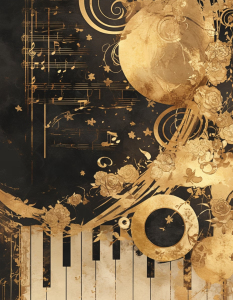Learning: Rhythmic Patterns
Rhythmic patterns are fundamental groupings of beats that frequently occur in music. These combinations are commonly seen within a measure and are often played in a short time frame. For students learning classical sheet music, mastering these rhythmic forms during sight-reading is essential. Once familiar, they can be recognized as complete units, greatly enhancing sight-reading fluency.
1. Eighth Notes
When tapping the beat, count the first note on the downward motion of the hand and the second note on the upward motion. This way, each beat is divided into two notes, helping you maintain a steady pulse.
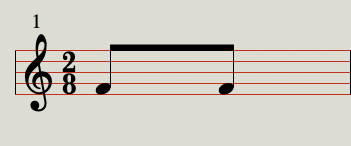
2. Sixteenth–Eighth Note Pattern (Sixteenth note first)
This three-note group feels like a quick triplet, giving a “da-da-da~” sound. It’s commonly used in faster-paced easy sheet music and requires a light, quick touch.

3. Eighth–Sixteenth Note Pattern (Eighth note first)
Here, the first note is longer and the following two are shorter. The last two lead directly into the next beat. Many students encounter this while learning piano notes in beginner pieces.
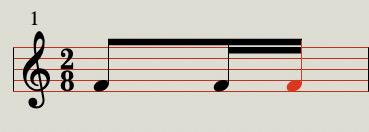
4. Sixteenth Notes
Tap the first two notes on the hand’s downward motion and the next two on the upward motion. Keeping the spacing even is key. These often appear in classical sheet music etudes to build dexterity.
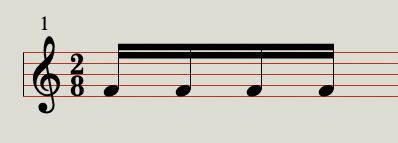
5. Syncopation
The middle note is accented unexpectedly. Syncopated rhythms are essential in musical phrasing and can be practiced through piano online lessons that focus on expressive interpretation.
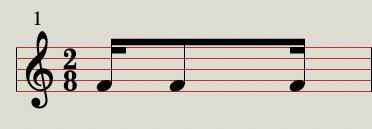
6. Dotted Rhythm (Dotted note first)
This pattern features a long note followed by a short one, creating a lopsided, bouncy effect. It’s commonly found in dance forms and is a frequent sight in classical sheet music.
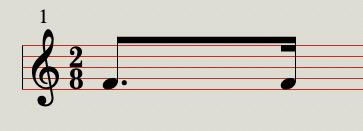
This rhythm often appears in succession. In that case, the sixteenth note (highlighted in red) feels tightly linked to the dotted eighth note of the following beat.

Sometimes, the rhythm includes a rest instead of a dotted note. The playing sensation remains similar, but the first note becomes even shorter.
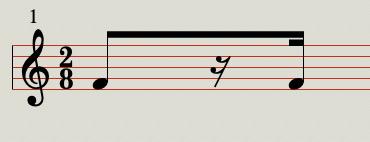
7. Reverse Dotted Rhythm (Short note first)
Here, the two notes are played quickly, followed by a longer pause. This creates a “da-da~~” phrasing. These patterns help students interpret dynamics and timing accurately during piano online lessons.
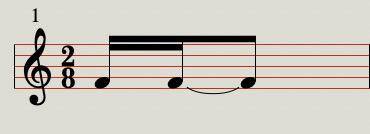
8. Triplets
Visualize a triangle when tapping the beat: each side represents one note. The triplets should be played evenly, avoiding compression of the first two or the last two notes. These help learners grasp rhythmic flexibility in both easy sheet music and more advanced repertoire.

9. Triplet Tie (First note tied)
A tie between the first two notes alters the rhythm: the first two notes occupy two-thirds of the beat, and the third takes one-third. Take care not to confuse this with dotted rhythms when reading piano notes.
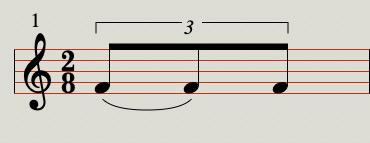
10. Triplet Tie (Last note tied)
In this variation, the last two notes are tied. The rhythm is inverted: the first note gets one-third of the beat, and the tied pair takes up the remaining two-thirds. Again, proper recognition is key during sight-reading.

Each of these rhythmic patterns occupies exactly one beat. Start by practicing each individually, then blend them together in creative combinations. As you become more fluent, your sight-reading of classical sheet music will become faster and more confident.
Here’s an example of a combined rhythmic sequence:

Feel free to mix and match other patterns like this—it’s a great way to build rhythm confidence through hands-on exploration, especially when paired with easy sheet music in structured piano online lessons.
FAQs
Q1: How can I improve my rhythmic accuracy when reading classical sheet music?
A: Break rhythms into familiar patterns and practice them repeatedly. Use a metronome, and reinforce them during piano online lessons to develop consistency.
Q2: Why is rhythm so important in piano learning?
A: Rhythm controls timing and musical expression. Even if you play the correct piano notes, poor rhythm can disrupt the entire piece. Learning rhythmic patterns sharpens your overall musicality.
Q3: What’s a good way for beginners to start with rhythm practice?
A: Begin with clapping or tapping exercises, then apply those patterns to easy sheet music pieces. As you progress, incorporate more complex patterns found in standard classical sheet music.
